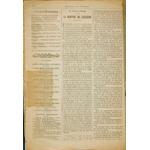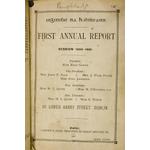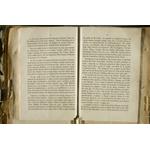Those that set the stage
Maud Gonne MacBride and Inghinidhe na hÉireann
Maud Gonne contributed to the Rising by fostering the political awareness of women and by establishing Inghinidhe na hÉireann, some members of which were to participate in the Rising. Maud Gonne MacBride (1865-1953) was born at Aldershot in the south of England where her father, an army officer, was stationed. Her mother died while she was still a child. She was mainly educated by governesses, partly in France. She lived in Dublin for a period when her father was posted to the Curragh camp. On his death in her early twenties, she became financially independent. Around that time she came under the influence of the veteran Fenian John O’Leary, who introduced her to the revolutionary nationalist movement. He is also said to have introduced her to the poet W.B. Yeats, who was to remain infatuated with her for most, if not all, of his life and who was also to a certain extent influenced by her nationalist outlook. She later spent some years in France where she became involved in republicanism while close to the Boulangist Lucien Millevoye, by whom she had two children in the early 1890s.
Back in Ireland, she became one of the most prominent and colourful activists in various nationalist, socialist and feminist causes. She was particularly involved in countering evictions and in famine relief in counties Donegal and Mayo in the 1890s. She also took part in protests associated with the diamond jubilee of Queen Victoria in 1897 and the visit of King Edward VII in 1903. Much of her activity, however, was unfocused and ad hoc: she appeared to be inspired by a positive hostility towards her native country and had no constructive strategy to advance the cause of Ireland.
Maud Gonne’s most notable contribution was to the establishment in April 1900 of Inghinidhe na hÉireann (Daughters of Ireland). The organisation was solely for women and adopted Saint Brigid as patron. Its agenda was political, social and feminist: it opposed the Irish Parliamentary Party and Home Rule, opting instead for full independence, but supported the Irish-Ireland movement, the concepts of self reliance preached by Sinn Féin, free meals in schools and women’s suffrage. It organised programmes of distinctively Irish cultural activities and promoted national self awareness. From 1908 onwards it published Bean na hÉireann (‘Irishwoman’), a nationalist womens’ journal. In 1914 Inghinidhe na hÉireann was absorbed into Cumann na mBan, the women’s auxiliary of the Irish Volunteers, although some trades union members then opted to join the Irish Citizen Army. In its time, Inghinidhe na hÉireann helped to politicise a generation of Irish women, many of whom afterwards participated in the 1916 Rising.
In 1901 Maud Gonne embarked on a lecture tour of the United States with Major John MacBride, who had organised the Irish Brigade and fought on the side of the Boers in South Africa. They married in 1903. MacBride was a Roman Catholic and Gonne converted to his faith before the marriage. On the failure of the marriage she settled in Paris where she continued to contribute to Bean na hÉireann and edited the news-sheet L’Irlande Libre, in both of which she advocated the use of physical force as a means of achieving national independence. She took no direct part in the 1916 Rising. She did not settle in Ireland again until 1917, by which time John MacBride had been executed for his part in the Rising.







